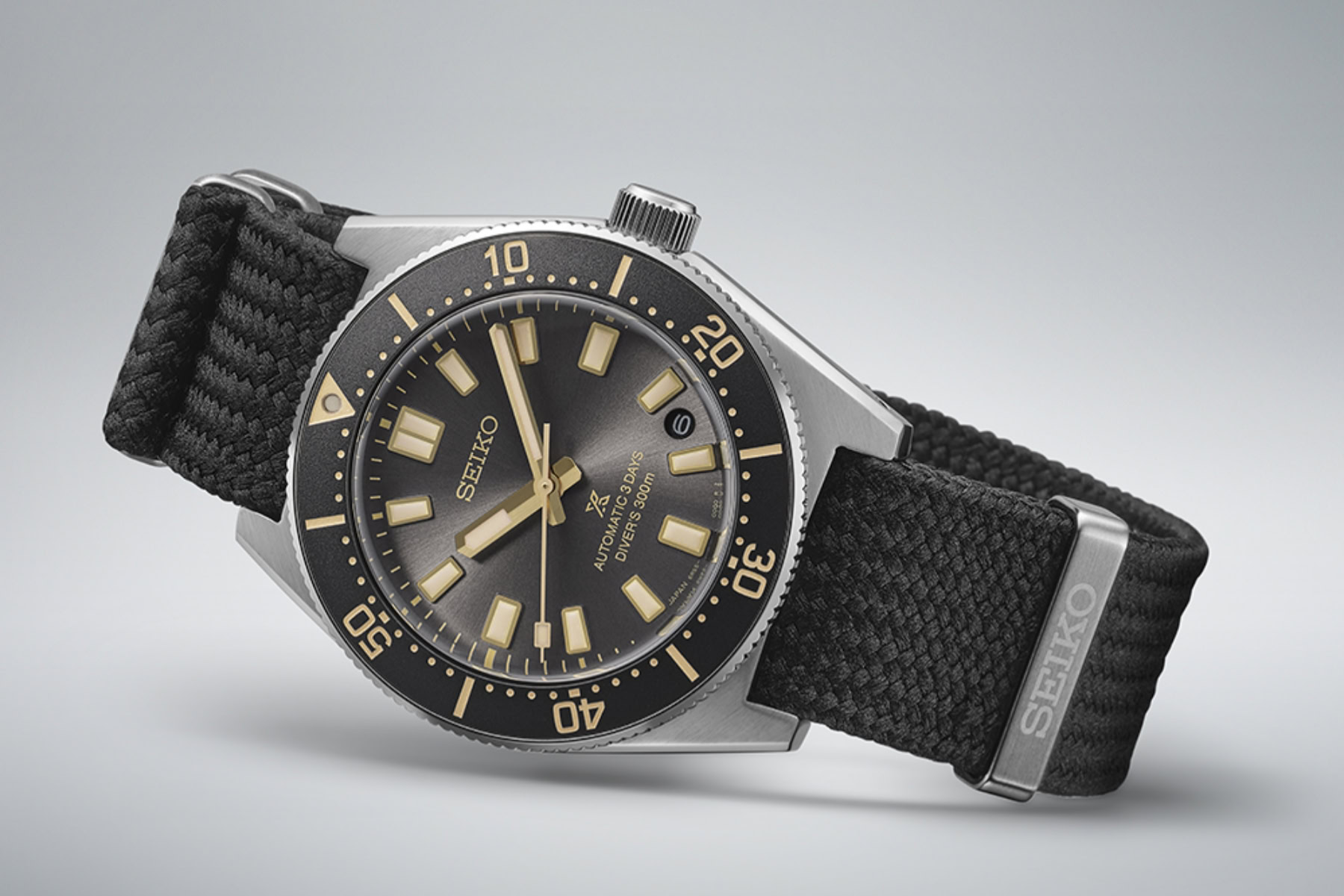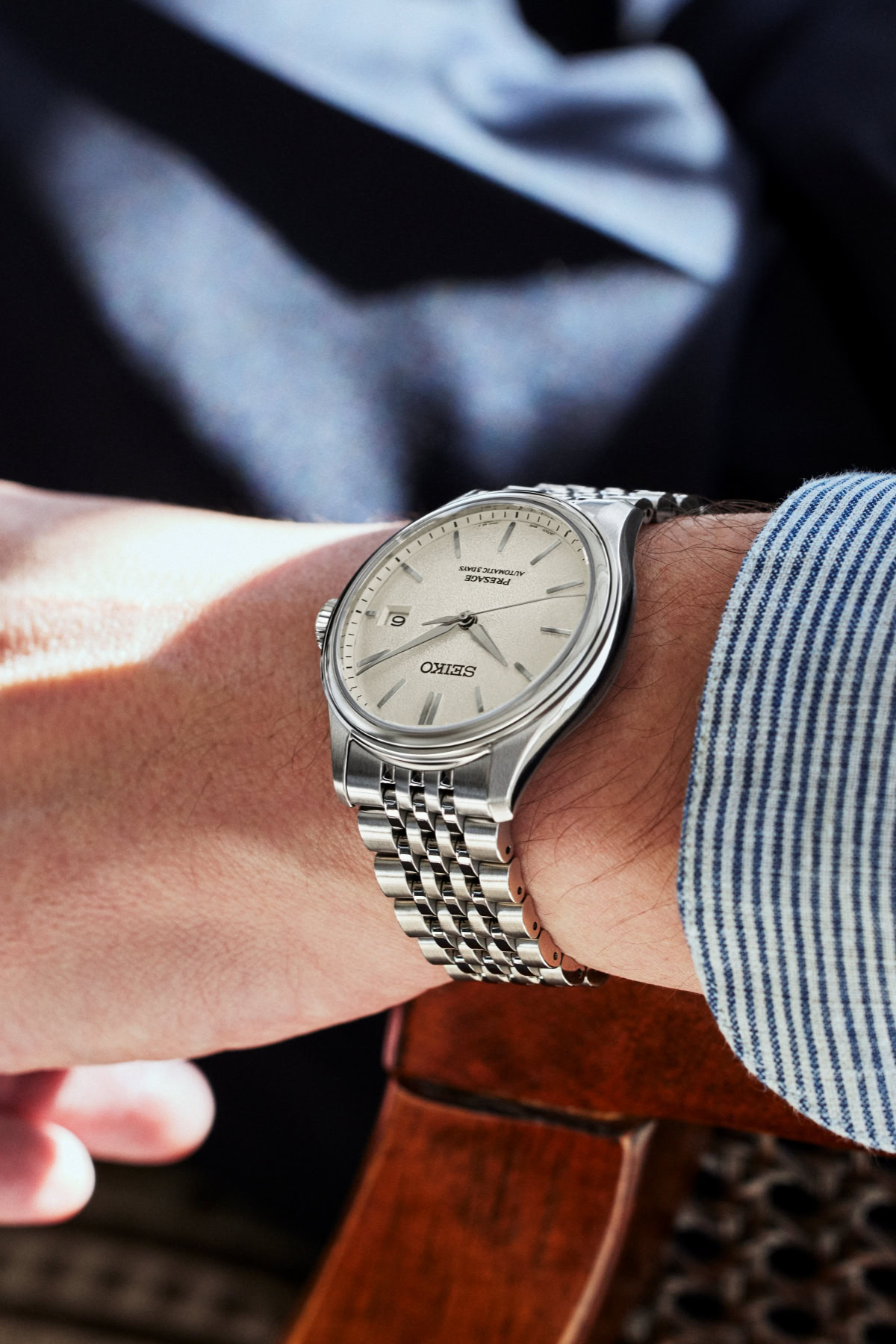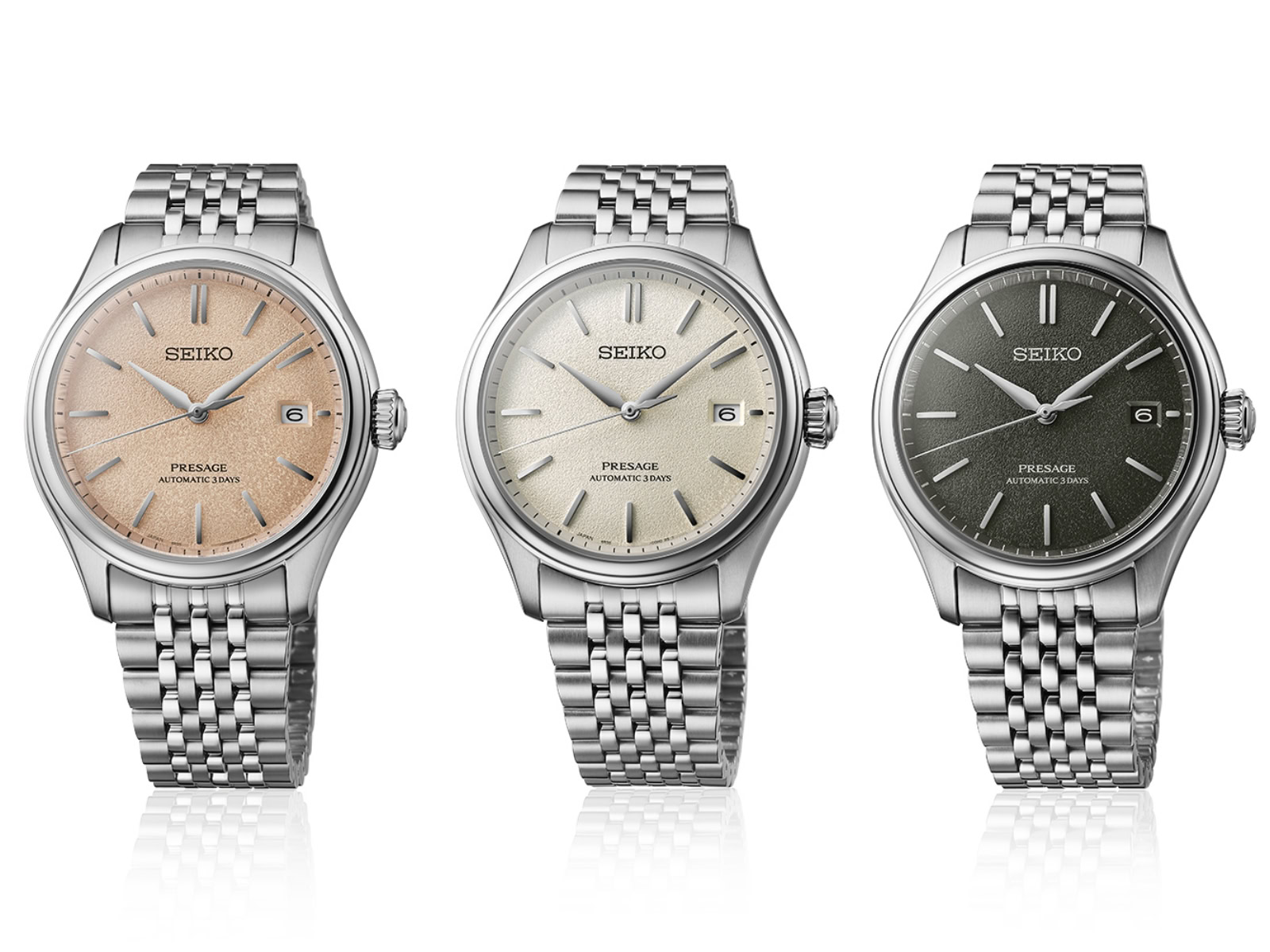This year, Seiko — Japan’s commercial watchmaker par excellence — celebrates its 100th birthday. And although it’s still early days for the 2024 release calendar, the ‘House of Precision’ has opted to kick its centennial festivities off with a flurry of new releases.
Some are sporty, others embody a unique cultural notion, but predictably, each is likely to leave enthusiasts tickled. In typical Seiko fashion: offering a lot of watchmaking know-how, for a not-unfair price.
Broadly, this first wave of new Seiko watches (in 2024) is split between a heritage diver design, and a completely new sub-line inside the bigger Presage collection. Both will be available starting in June, but in the meantime, let’s take a closer look below.
RELATED: The 17 Best Grand Seiko Watches In 2024
A Reimagining Of The Legendary Prospex Diver


Seiko introduced its first-ever purpose-built dive watch, the 62MAS, in 1965. That, in turn, provided the blueprint for the SPB143: a watch with a huge following among enthusiasts of affordable mechanical divers, and now, the brand is once again revisiting the Prospex collection with a trio of new releases that are even more closely related to the original 62MAS.
I say “related”, as opposed to “based on”, because these new 2024 Prospex divers unpack some of the design codes of that historical Seiko dive watch with a critical lens. The proportions of the dial are a little more balanced, the case flanks seemingly more svelte, and (quite obviously) Seiko’s designers did away with the 3 o’clock date window — moving that aperture to the ‘controversial’ 4.30 position that seems to trigger a Pavlovian response in certain forum-dwelling obsessives.

That said, a lot of what makes these watches a definitive upgrade over the SPB143, can be found internally. The “Automatic 3 Days” signature is a dead giveaway that these Prospex divers now have — for the first time ever — a full-tilt 72-hour power reserve.
Additionally, they’re rated to a depth of 300m. Again, that’s a great technical detail, but my personal fascination with this new water resistance stems from how it was achieved. Rather than going the traditional route and simply making watches with a thicker case, Seiko engineers came up with a new strength-enhancing, space-saving design for the caseback.

That, in tandem with the company’s well-known use of MEMS component processing, allowed these Prospex divers to be kept to a 40mm x 13mm form factor. In layman’s land, case size reductions of 0.2-0.3mm might seem like a trivial matter, but I’m confident Seiko’s insistence to keep these new watches in the ≤40mm range will yield commercial dividends.
Seiko’s All-New Presage ‘Classic Series’


On the flipside to the new Prospex divers, you’ll find the new ‘Classic Series’: a diffusion inside the traditionally dressy, craft-focused Presage collection made up of five watches.
An exploration of the “soft and gentle side of Japanese design”, these pieces have a pleasing throwback quality to the 1970s: an era when steel watches on multi-link bracelets were associated with a dressy aesthetic.
Unsurprisingly, my kneejerk reaction to the time-and-date models has been pretty positive. All of the design codes embrace a flowing, contoured dynamic. The crystal is double curved, the dial is rounded, and (per the press images above) you can just make out that the indexes slope with the dial.
This philosophy of softness extends to the bracelet, which Seiko’s designers intended (from the get-go) to be as ergonomic as possible. As such, the ventral links sitting closest to the wearer’s wrists are all machined with a curved and rounded shape, while there are fewer contact points than in previous Presage bracelets.

In addition to the date models, Seiko has launched this ‘Classic Series’ with another two “open-heart” variations: these are powered by the Calibre 6R5J, but notably, are still derived from the same 6R55 movement in service across the range of new Prospex divers.
The classic and culturally resonant theme of these watches is at its most obvious when you look at the available colours. Rather than going for brash sunburst blues or matte monochromes, the taupe, charcoal-ish and washed salmon shades are all evocative of the organic dyes that Japanese craftspeople might use during the Edo period.
Of those, my favourite is probably the araigaki: a persimmon colour with lots of white overtones, that’s just different enough from the salmons and orange pastels of the world.


